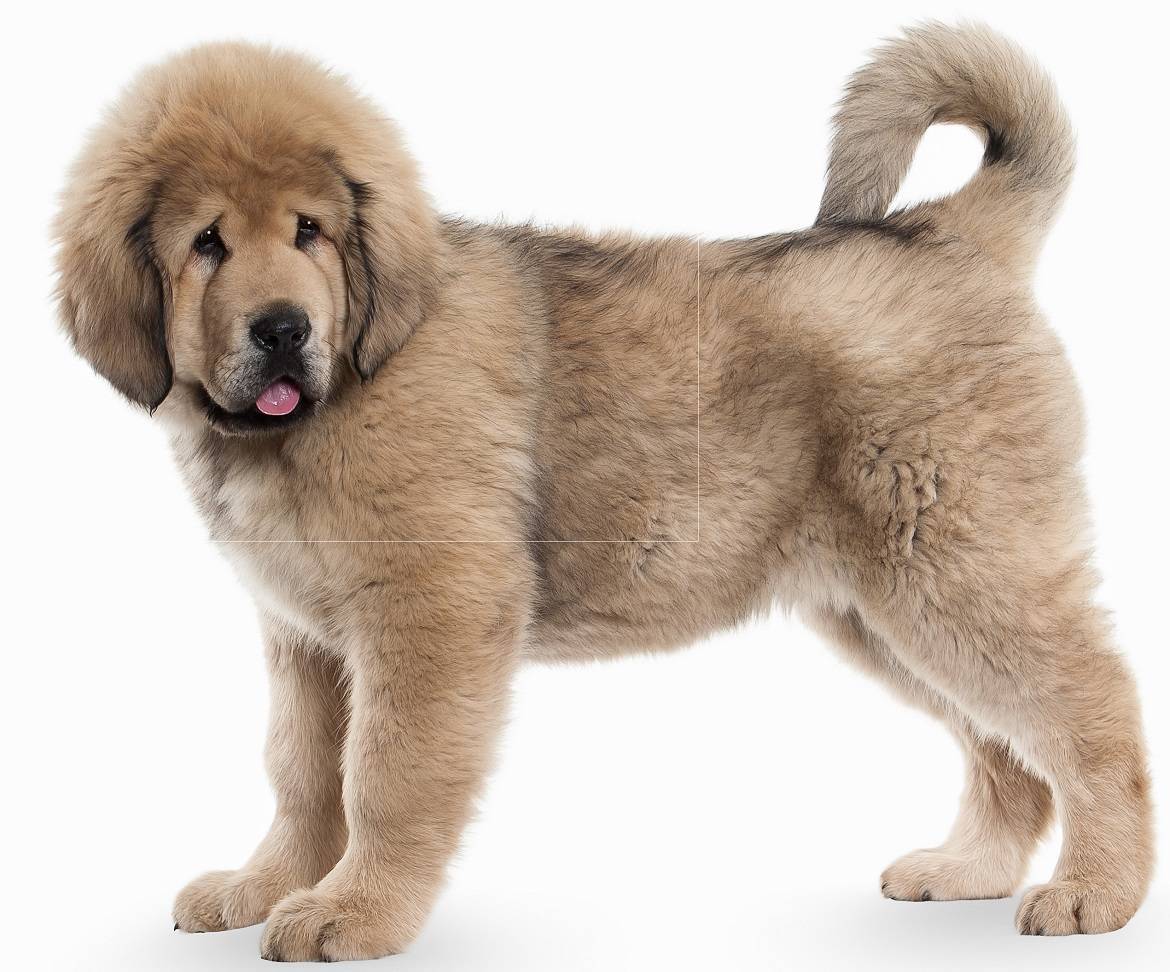
Paws ‘N’ Pups Quickview
Size
| Energy Level
| Trainability
| Paws ‘N’ Pups Rank
|
Characteristics
| Physical Characteristics: Height: 24-30” Weight: 75-160 lbs. Energy Level: Moderate – High | The American Kennel Club recognizes the Tibetan Mastiff in the following colors:
White markings are common among Tibetan Mastiff dogs. |
| Health & Longevity: 10-12 years Breeders screen for the following conditions:
During periods of growth, some Tibetan Mastiffs can experience Panosteitis, commonly referred to as “growing pains”. It is usually self-limited but the discomfort produced can range from mild to severe. Osteochondrosis Dissecans (OCD), a painful condition caused by improper growth of the joint cartilage, may require surgical repair. | |
Temperament & Train-ability
The Tibetan Mastiff is a primitive guardian dog; there are centuries of selective breeding behind these noble dogs for making his own decisions about who is friend, who is foe, what constitutes a threat, and what is safe. You are unlikely to change his mind once an opinion is formed. This is an imposing, strong-willed and independent guard who won’t always look to you for guidance. The Tibetan Mastiff’s strong sense of self causes many to call him “stubborn”. While they can be affectionate with their people, they are naturally suspicious of strangers and resistant to change, the Tibetan Mastiff is too much dog (physically and mentally) for the average household. Very few have the facilities or skills necessary to manage this breed and keep him happy.
This self reliant, intelligent breed is not suited to apartment or condo living, and definitely needs an experienced hand. Timid people are likely to be very unhappy living with a Tibetan Mastiff, as are those not home much; a bored or lonely Tibetan Mastiff is capable of more noise and destruction than you can imagine. They may also take to escaping and wandering at large, where their decisions usually get them into trouble. If you lead a highly social life and people are coming and going, this is not the breed for you. These highly sensitive dogs are upset with arguing and yelling, making emotional households a bad match. Young children can also cause problems; too large for toddlers, the Tibetan Mastiff can also mistake children’s playful screams as signs of trouble, and often are reluctant to allow your children’s friends over to play. Children’s roughhousing may compel him to “protect” his kids. All interactions with children must be supervised. They are miserable in high heat and humidity, but love a cold climate. Tibetan Mastiff may accept other dogs (of the opposite sex) if raised with them, but is unlikely to welcome other dogs once mature. If you have your sights set on training and perhaps competing in a sport such as obedience or agility, this is not the breed for you.
With fairly low exercise requirements, the Tibetan Mastiff is usually content with a couple 30-minute walks per day. You will want to walk different routes each day, however, or he may become protective and aggressive on frequently traveled routes. Generally calm indoors (as an adult), the Tibetan Mastiff can be quite the barker, especially outside at night, when they are on high alert.
As with other primitive breeds, the Tibetan Mastiff requires massive amounts of socialization as puppies; it is this process that teaches them to discriminate what is normal and therefore no need for concern. This intensive socialization process will last from puppyhood through 18-24 months of age; one puppy class won’t cut it.
The Tibetan Mastiff will bond and enjoy your company, but not always obey you, especially if he thinks he’s right, which is most of the time. Intelligent but because of his strong-willed, independent nature, a Tibetan Mastiff is not easy to train. Punishment-based training methods will not work with a Tibetan Mastiff. Be patient, consistent, and firm but loving and respectful; you will be his partner, not his boss, and he is likely to test your convictions often.
Grooming
Tibetan Mastiffs have a profuse double coat developed during centuries of living in the harsh Tibetan landscape. Unlike most breeds that blow their coats twice yearly, the Tibetan Mastiff looses its coat only once each year, during the spring/summer season. They require vigorous brushing during this time. They shed surprisingly little the rest of the year, but still require weekly brushing to maintain healthy skin and check for mat formation.
Diet
The amount of food a Tibetan Mastiff will require can vary depending on age, activity level, and type of food fed. On average, they will eat 4-6 cups of food daily, fed in two meals; free feeding should be avoided. A high quality food should be fed, and one formulated for giant breeds is recommended. Many Tibetan Mastiffs are prone to overeating and weight gain, which should be avoided by carefully monitoring food intake. A constant supply of fresh, clean water must always be available.
Looking for a Tibetan Mastiff?
 Find A Tibetan Mastiff Breeder |  Tibetan Mastiff Puppies For Sale |  Adopt A Tibetan Mastiff |
Cost
Tibetan Mastiffs can run between $2,000 up to $5,000. Occasionally, a Tibetan Mastiff may be available through breed rescue. Whether you acquire a dog from a breeder or rescue, do your homework to be assured that the temperaments of the dogs are tested and sound.
Ongoing expenditures include the typical supplies, food, and regular vet visits. Additionally, you may need to invest in an extra supply of chew and food-dispensing toys as well as training classes to keep your busy Tibetan Mastiff occupied and healthy. Remember, too, everything costs more with a large dog; beds, the amount of food needed, as well as veterinary procedures. Don’t forget to consider whether your automobile can safely accommodate an adult Tibetan Mastiff.
Paws ‘N’ Pups Ranking
Paws ‘N’ Pups ranks every breed out of 4 with 1 being easiest to integrate into your life and 4 being the toughest – The lower the ranking the better.
Ranking takes into account a few basic factors such as cost, skill level needed, high vs low maintenance, and how critical regular training is to success. The Tibetan Mastiff rates a 4; cost, skill and amount of time and energy required to raise and live with a Tibetan Mastiff make them a very challenging breed to own.
Breeds Similar To Tibetan Mastiff
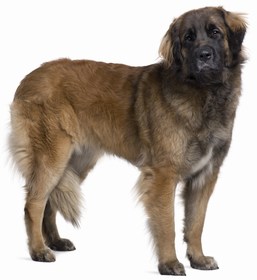 Leonberger | 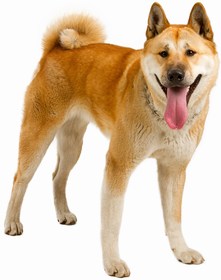 Akita | 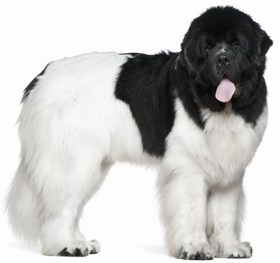 Newfoundland | 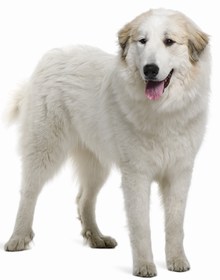 Great Pyrenees |




